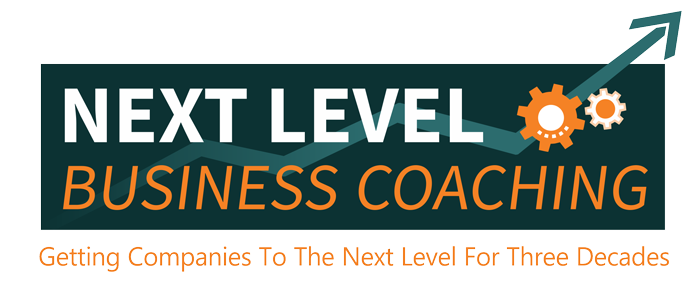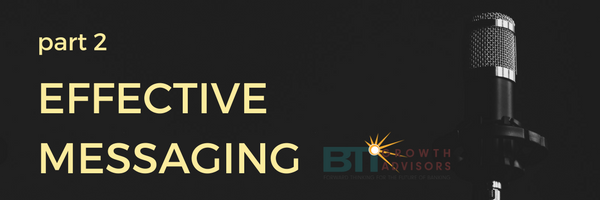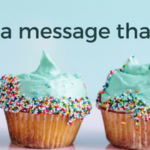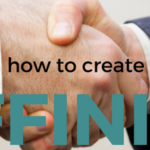Are Your Lenders “Completely Typical and Unmemorable?” Part 2
Welcome to the second blog in a three-part series dedicated to the art and science of effective customer messaging. As we discussed in my last blog, the common banking jargon and buzzwords used by most Lenders and Relationship Managers, position them as a commodity. Sometimes good customer service, competitive rates, and broad selection of financial products are not enough to differentiate a bank from their competitors in today’s highly competitive business landscape.
 In this blog, I’ll be discussing the role of the following aspects that lead to more effective customer messaging:
In this blog, I’ll be discussing the role of the following aspects that lead to more effective customer messaging:
- Affinity – A powerful force used to differentiate and attract new customers
- Narrow-casting – The art of tailoring your message to your audience
- Thinking differently about what a company website represents
Well-Known Brands with Effective Customer Messaging Strategies
In my last blog, I referenced the following five companies who are exceptional at branding and messaging customers.
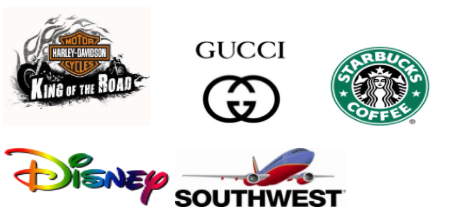
As we delve deeper into the subject of customer messaging, let’s briefly look at these five companies and their customer messaging strategies.
Two factors strongly contribute the effectiveness of their customer messaging strategy.
1. They know who is their ideal customer
In today’s saturated market, generalized, “one-size-fits-all” messaging that is designed for a broad audience simply is not heard. It’s just more noise in an already noisy marketplace. Effective marketers target very specific types of customers — ones they know from their experience are the “ideal customers.”
They do this for two reasons:
- They don’t have the budget sufficient to effectively mass-market
- Capturing the attention of new customers isn’t easy
2. Their marketing messages are crafted to resonate with their ideal customer
 This is called “narrow-casting” which is a fancy word for focusing your marketing messages such that they resonate with your ideal customer. Just like a dog-whistle can only be heard by a dog, to create effective marketing messages, they must be designed and crafted to speak directly to the hearts and minds of a company’s ideal (most profitable and loyal) customer. When done effectively, a marketing message creates an affinity or attraction between a company and their ideal customer. That attraction causes a customer (new or prospective) to be interested in what a company is offering.
This is called “narrow-casting” which is a fancy word for focusing your marketing messages such that they resonate with your ideal customer. Just like a dog-whistle can only be heard by a dog, to create effective marketing messages, they must be designed and crafted to speak directly to the hearts and minds of a company’s ideal (most profitable and loyal) customer. When done effectively, a marketing message creates an affinity or attraction between a company and their ideal customer. That attraction causes a customer (new or prospective) to be interested in what a company is offering.
Who are the ideal customers for the five companies identified above and what is their customer messaging strategy?
- Harley Davidson’s ideal customers are men ages 35 to 65 who are either somewhat rebellious by nature or who want to break from convention and take to the freedom of the open road.
- Gucci’s ideal customers are mostly wealthy or upper-middle class women primarily, but also men. When you wear Gucci, you tell the world you’re sophisticated, successful and that “you’ve arrived.”
- Starbucks ideal customers are hipsters of every age. Starbuck’s is an experience and their locations have become extensions of our living rooms where people hangout for hours and offices where people meet to discuss business.
- Disney’s ideal customers are kids who want to go to the “happiest place on earth.” Disney’s brand speaks to all parent’s desire to create lasting family memories.
- Southwest Airlines is “the fun airline” whose ideal customers are friendly, fun and like low fares.
What do you notice about all five of these well-known brands? Their messaging is carefully designed to speak and resonate with their ideal customers. These companies craft marketing messages that create affinity between the company and their ideal customers.
 What Is Affinity?
What Is Affinity?
Advertisers have been using affinity to attract their ideal customers for centuries!
Affinity – Noun
- an attractive force
- a natural liking for or attraction to a person, thing, or idea
- a person, thing or idea for which such a natural attraction is felt.
When Lisa and I work with Relationship Managers and Lenders on improving their customer messaging, we guide them through an evaluation process that helps begin to define their target market and their ideal customer. If you’re going to improve how you message customers, you must abandon the notion that saying the same things you’ve always said to different customers is effective. It’s marginally effective at best. You want to communicate in a way that creates affinity between you and your prospective customer.
There are many benefits to creating affinity with your ideal customer. It helps you and your team:
- Focus your marketing efforts and make you more efficient
- Leverage your strengths
- Become more effective at differentiating yourself from your competitors
- Bring more value to your customers by better leveraging your knowledge, expertise and experience
- Become better able to put yourself in situations where you’re most attractive to your ideal prospect
If your desire is to work smarter, not harder, you must become more strategic and disciplined about your marketing efforts.
Thinking Differently About Company Websites
Lisa and I are huge believers in having a disciplined and in-depth, pre-call planning process. If you’re preparing for an in-person sales call with a potential ideal customer, why wouldn’t you thoroughly prepare? After all, ideal customers are your bank’s most profitable and loyal customers.
Unfortunately, the pre-call planning process of the majority of Relationship Managers is anything but disciplined, and it certainly isn’t “in-depth.” All too often, pre-call planning happens in the car while driving to the sales call.
Part of a thorough pre-call planning process involves reading (not skimming) and studying, (you heard me right) “studying” a company’s website.
A company’s website is far more than just a presentation of facts, history, products and services offered by a company.
A Website Is Like a Fingerprint
Everything on a company’s website is designed with a purpose and every sentence and paragraph is carefully crafted. So much time and energy goes into the development of a website because it is usually the hub of a company’s marketing platform. It is an individual and unique expression of a company much like a fingerprint is unique to each individual.
Consider what else beyond the surface level information you can glean from a company’s website:
- What the owner’s values are and what the company values
- What it takes to build a successful company
- The vision and mission of the company
- What differentiates them from their competitors
- What is their philosophy on customer service
- What they are committed to
- Are they a charitable company and if so, what charities do they support
- How they present and position their products and services to their prospective customers
This information is the critical content every Relationship Manager and Lender should be using to craft much more effective marketing messages.
In my final blog post on this subject, I’ll be focusing on the development of a true customer messaging strategy that is unique and specific to each of your team’s sales calls.
